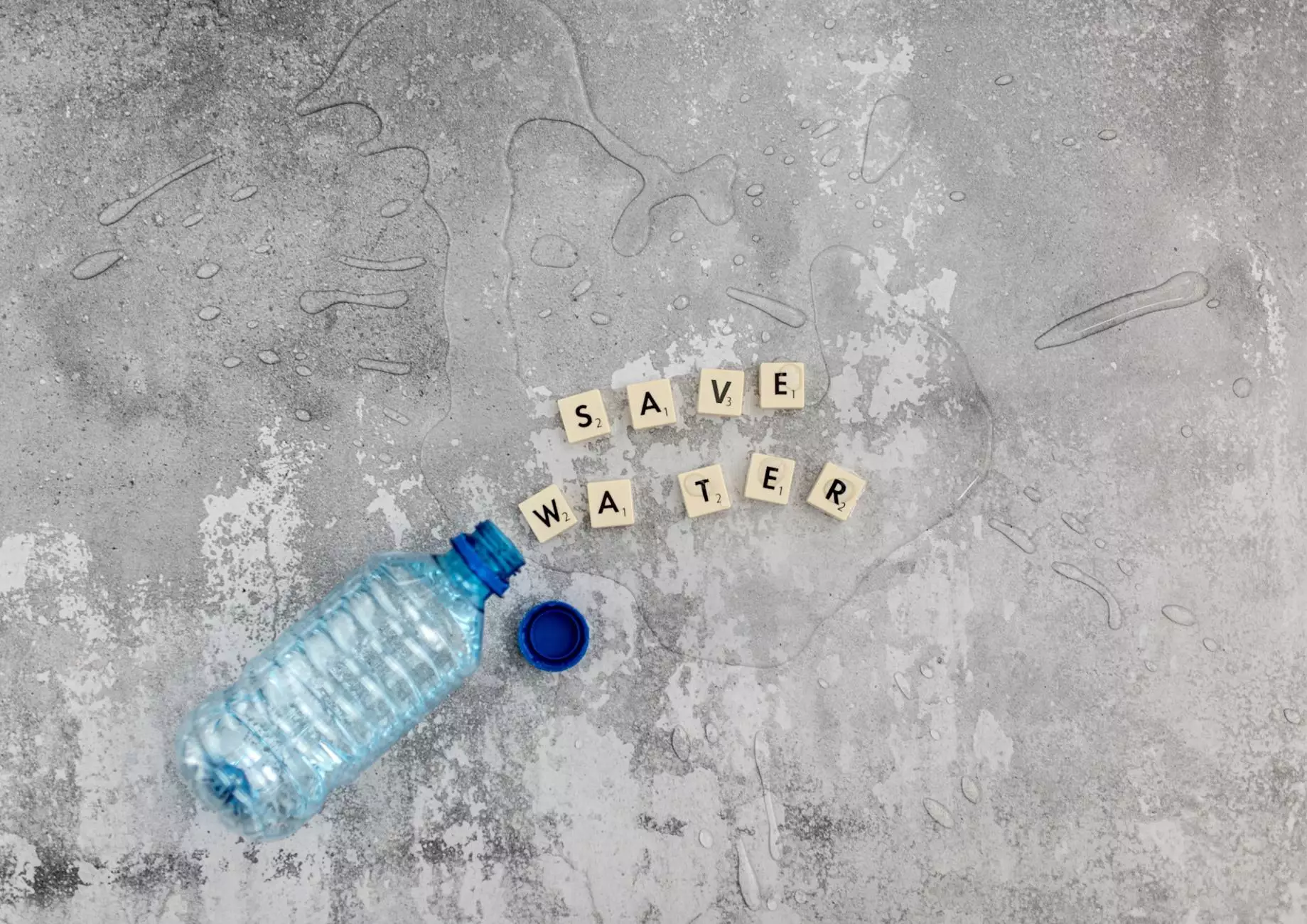24 Lessons on Email Marketing from #SproutChat
Blog
Introduction
Welcome to Modern Luxe Creative's comprehensive guide on email marketing. In this article, we will explore 24 valuable lessons that we've learned from the popular Twitter chat, #SproutChat. Whether you are a beginner or an experienced marketer, these lessons will help you optimize your email campaigns and drive better results. So, let's dive in!
Lesson 1: Building a Strong Email List
One of the foundational steps in successful email marketing is building a strong email list. To create an engaged audience, it's crucial to attract the right subscribers who are genuinely interested in your content. Implementing lead generation strategies, such as offering valuable incentives, optimizing sign-up forms, and utilizing social media platforms, can help you grow your list effectively.
Lesson 2: Crafting Compelling Subject Lines
The subject line of your email plays a significant role in determining open rates. A compelling subject line should be concise, personalized, and create a sense of urgency. Avoid using generic subject lines that can easily be ignored. Experimenting with catchy phrases and A/B testing can help you find the perfect formula to entice your subscribers to open your emails.
Lesson 3: Personalization and Segmentation
Personalized emails have a higher chance of resonating with your audience. By segmenting your email list based on user behavior, demographics, and preferences, you can tailor your messaging to specific groups, increasing engagement and conversions. Use automation tools and dynamic content to make personalization more efficient.
Lesson 4: Designing Visually Appealing Templates
Beautifully designed email templates enhance your brand image and help capture your subscribers' attention. Choose a clean and responsive design that looks great across different devices and email clients. Incorporate your brand colors, logos, and compelling visuals to create visually appealing emails that align with your overall brand identity.
Lesson 5: Engaging Email Content
Providing valuable and relevant content is the key to keeping your subscribers engaged. Create compelling copy that educates, entertains, and solves problems for your audience. Incorporate multimedia elements, such as images, videos, and infographics, to make your emails visually appealing.
Lesson 6: Call-to-Action Optimization
A clear and persuasive call-to-action (CTA) guides your subscribers towards the desired action. Use actionable language, compelling visuals, and strategic placement to encourage clicks. Test different CTAs and analyze the results to optimize for higher conversion rates.
Lesson 7: Email Automation
Automating your email campaigns not only saves time but also allows you to deliver personalized and timely messages to your subscribers. Implement automated workflows, such as welcome emails, abandoned cart follow-ups, and re-engagement campaigns, to nurture leads and build stronger relationships with your audience.
Lesson 8: A/B Testing and Analytics
Constantly testing and analyzing your email campaigns is crucial for ongoing improvement. Conduct A/B tests to optimize various elements, such as subject lines, CTAs, design, and content. Leverage analytics tools to gather insights on open rates, click-through rates, conversions, and unsubscribe rates to make data-driven decisions.
Lesson 9: Email Deliverability and List Hygiene
To ensure that your emails reach your subscribers' inboxes, you need to focus on email deliverability and regularly clean your email list. Keep an eye on your sender reputation, maintain proper list hygiene, and avoid spam triggers to maximize deliverability and engagement.
Lesson 10: Mobile Optimization
A significant portion of emails is now accessed on mobile devices. Therefore, it's crucial to optimize your emails for mobile. Use responsive email designs, concise content, and large, tappable buttons to provide a seamless mobile experience for your subscribers.
Lesson 11: Email Personalization at Scale
As your email list grows, personalized communication becomes more challenging. However, leveraging marketing automation platforms and customer relationship management (CRM) systems can help you personalize your emails at scale. Use dynamic content, triggered campaigns, and behavioral data to create personalized experiences for your subscribers.
Lesson 12: Building Trust and Maintaining Relationships
Building trust with your subscribers is vital for long-term success in email marketing. Deliver on your promises, provide valuable content consistently, and personalize your communication to maintain strong relationships. Use feedback loops, surveys, and subscriber preferences to better understand your audience and deliver what they need.
Lesson 13: Email Integration with Other Marketing Channels
Email marketing doesn't work in isolation. Integrate your email campaigns with other marketing channels, such as social media, content marketing, and paid advertising, to create a cohesive customer journey. Leverage cross-channel promotions and targeted campaigns to amplify your reach and engagement.
Lesson 14: Nurturing Leads and Drip Campaigns
Nurturing leads through personalized drip campaigns is an effective way to guide your subscribers towards a conversion. Map out your buyer's journey, create relevant content for each stage, and automate the delivery of emails based on user actions. Gradually build trust and move your leads towards making a purchase decision.
Lesson 15: Email Retargeting
Retargeting your email subscribers through segmented campaigns allows you to re-engage those who haven't converted yet. Develop strategies to target specific segments with personalized offers, reminders, and incentives to bring them back to your website or promote new products or services.
Lesson 16: Customer Lifecycle Emails
An effective email marketing strategy covers the entire customer lifecycle. From welcome emails to post-purchase follow-ups and loyalty programs, map out your customer journey and create relevant email touchpoints to keep your customers engaged and foster loyalty.
Lesson 17: Email Frequency and Timing
Finding the right balance between email frequency and timing is crucial to avoid overwhelming your subscribers or getting lost in their inbox. Test different frequencies and timing to identify the optimal cadence that suits your audience. Consider time zones and analyze open and click-through rates to refine your sending schedule.
Lesson 18: Email List Segmentation for Relevance
Segmenting your email list based on user behavior, demographics, and preferences is essential for delivering highly relevant content to each segment. Avoid sending generic emails to your entire subscriber base. Instead, tailor your messaging and offers to specific segments to improve engagement and drive conversions.
Lesson 19: Repurposing Content for Email Campaigns
Repurposing existing content, such as blog posts, social media updates, and videos, into email campaigns is a great way to provide additional value to your subscribers. Create teaser emails, curated content digests, or exclusive offers using your existing assets to maximize engagement and repurpose your content efforts.
Lesson 20: Email Metrics and Reporting
Monitoring and analyzing email metrics are essential for measuring the success of your campaigns and identifying areas for improvement. Track key performance indicators, such as open rates, click-through rates, conversion rates, and revenue generated, to gain insights into the effectiveness of your email marketing efforts.
Lesson 21: Email Compliance and Privacy
Adhering to email compliance regulations, such as CAN-SPAM and GDPR, is crucial for maintaining trust and protecting subscriber privacy. Familiarize yourself with the legal requirements, provide clear opt-out options, and handle subscriber data responsibly to ensure compliance and build a solid reputation.
Lesson 22: Continuous Learning and Adaptation
Email marketing is a constantly evolving field, and staying updated with the latest trends and best practices is crucial for success. Follow industry experts, attend webinars, participate in communities like #SproutChat, and continuously adapt your strategies to provide the best possible experience to your subscribers.
Lesson 23: Email Marketing Automation Tools
Utilizing email marketing automation tools can significantly enhance your efficiency and enable you to scale your campaigns. Explore popular automation platforms, such as Mailchimp, HubSpot, or Klaviyo, to simplify your workflow, streamline segmentation, and integrate with other marketing tools.
Lesson 24: Testing, Iteration, and Innovation
Effective email marketing requires a mindset of testing, iteration, and innovation. Embrace a culture of continuous improvement, experiment with new strategies and technologies, and learn from the results to refine your campaigns over time. Adaptability and innovation will set you apart from your competitors.
Conclusion
By incorporating these 24 lessons into your email marketing strategy, you will be well on your way to achieving email marketing success. Remember, email marketing is about building relationships, providing value, and engaging your audience consistently. Stay dedicated, keep learning, and watch your email campaigns thrive!










